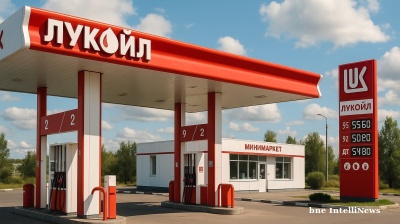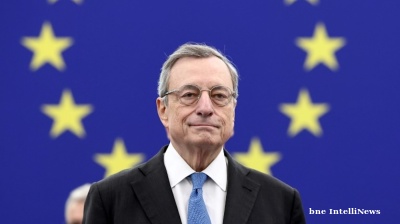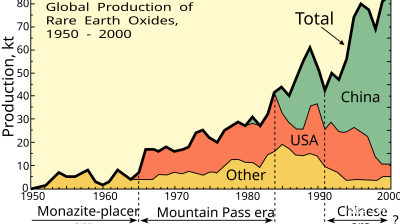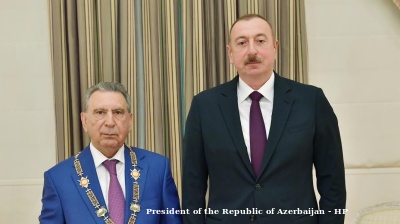Likely, any Azeri gas that does flow through Ukraine after this year will be Azeri in name only, with the molecules originating in Russia.
WHAT: Azerbaijan says the EU and Ukraine have proposed that it supply its gas through Ukraine after the transit contract between Moscow and Kyiv expires at the end of this year.
WHY: This would ensure continued use of Ukraine’s transit system, sparing it from Russian attacks, and maintain supply to European countries still dependent on supplies transited through Ukraine.
WHAT NEXT: The simplest option to achieve this would be a virtual swap between Russia and Azerbaijan. The gas molecules passing through Ukraine would still be of Russian origin, but titled as Azeri.
Azerbaijani President Ilham Aliyev claimed last month that Baku had been approached by Ukrainian and the EU authorities on the potential supply of Azeri gas to Europe through Ukraine after Kyiv’s long-term transit contract with Moscow expires at the end of this year. But Azerbaijan will struggle to find gas spare to replace Russian shipments in the short term, and any gas it does provide would have to pass through Russia first. It is questionable whether Moscow would ever agree to such an arrangement.
Instead, it seems likely that Azerbaijan and Russia would have to enter into a swap deal. In other words, any Azeri gas that does flow through Ukraine after this year will be Azeri in name only, with the molecules originating in Russia.
Calling time on the transit contract
The current consensus among analysts is that Russia and Ukraine’s gas transit contract will not be renewed beyond its expiry at the end of December. At stake is roughly half of Russia’s remaining pipeline gas supplies to Europe, amounting to 13.7bn cubic metres in 2023. The countries most dependent on Ukrainian gas transit are Austria, Slovakia and Moldova, which imported 5.7 bcm, 3.2 bcm and 2.0 bcm of Russian gas respectively via Ukraine last year, according to Norwegian consultancy Rystad Energy. Hungary, Slovenia and Croatia also rely on supplies via the route.
Ukraine is adamant it does not want to renew the transit deal with Russia, and the European Commission – which played a major role in brokering the current agreement at the end of 2019 – has said it is willing to let the contract expire. Russia has said it is open to negotiations on the subject, but has received no interest from the European side.
Of course, these positions could change over the next five months. After all, the current contract was only signed on December 30, 2019, one day before its expiry. But at present there seems to be no political will for a renewal.
Still, Kyiv, Brussels and the countries importing Russian gas through Ukraine all have an interest in continued gas transit in some form. Ukraine does not wish its vast gas transit system to become obsolete, putting it at risk of Russian attacks. Thus far, Moscow has only spared these pipelines because they continue to flow its gas. The EU wants to keep the infrastructure intact for the same reason, while European buyers do not want to scramble to find higher-priced alternative gas supplies.
Enter Azerbaijan
One solution that has been frequently debated in the media over the past month has been the transit of Azeri gas through Ukraine to Europe. Ukrainian President Volodymyr Zelenskiy confirmed his government was in talks with Baku on this option in an interview with Bloomberg on July 3. It is “one of the proposals” currently being discussed, he said. Azerbaijan’s Aliyev also confirmed on July 20 that Baku had been approached by Ukraine and the EU for assistance in maintaining gas transit via Ukraine post-2024.
“It seems that both sides are interested in that,” he told delegates at a forum in Azerbaijan. “We are also in the process of negotiations with Russia on this matter. If we can help, we will …. I think that it is possible to prolong this deal.”
The European Commission has not commented publicly on the matter. A spokesperson for the commission said it did not have a comment on “diversification options.”
“The EU has been preparing for many months for this scenario and, as Commissioner for Energy Kadri Simson said several times, we are ready to live without this Russian gas. Thanks to our preparations and diversification efforts, Europe can satisfy its demand for next winter and refill its gas storage in spring 2025 without using Russian pipeline gas,” the spokesperson told Newsbase. “We have been working very closely with the member states, especially those most affected by this transit agreement, on their diversification options. In the spirit of our REPowerEU Plan, agreed by all the 27 member states, the Commission will not push Ukraine to the negotiating table with Russia for an extension of this gas transit agreement.”
So there is little detail on how Azeri gas transit through Ukraine would work in practice. But there are several ways it could be arranged, and none of them would be easy to implement. The most straightforward option would be for Azerbaijan to simply assume ownership of Russian gas at the Russia-Ukraine border. But this will be a tough sell politically, as it does nothing to reduce Europe’s reliance on Russian supply.
What gas, which route
The first obstacle is that Azerbaijan will have limited spare gas supply, at least in the near term. The country’s production has increased significantly in recent years, from 19.6 bcm in 2017 to 35.9 bcm last year, thanks to the launch of the Shah Deniz Stage 2 project in the Caspian Sea. There are several other projects in the pipeline, including the Absheron field, the initial phase of which was launched by national oil company SOCAR and France’s TotalEnergies last year. This phase will only contribute 1.5 bcm per year of gas at its peak, however. Another phase is slated to start up in 2028, contributing 4 bcm per year, and a third in the early 2030s, bringing output to 7 bcm per year. All told, there are seven projects set to be approved or commissioned by the end of the decade, according to Rystad Energy, including the Umid, Babek and Shafag-Asiman fields.
However, while output continues to grow, Azerbaijan is only targeting 40 bcm per year of production by 2030, or 4.1 bcm more than last year.
The next question is how any extra gas could reach Ukraine. As energy experts Anne-Sophie Corbeau and Tatiana Mitrova note in a blog post for Columbia University’s Center on Global Energy Policy, the gas could be delivered via the 24 bcm per year South Caucasus Pipeline (SCP) and the 17.5 bcm per year Trans-Anatolian Pipeline (TANAP) in Turkey, and then pumped northward through Bulgaria-Romania pipelines to Ukraine. But these two pipelines, which form parts of the Southern Gas Corridor, are already running at full capacity. There are plans to expand SCP and TANAP’s capacities to 34 bcm per year and 31 bcm per year respectively, but these projects have not yet reached a final investment decision (FID).
As Azerbaijan’s government has stressed, these expansions would need to be underpinned by long-term supply contracts with European buyers, which have so far been reluctant to enter into such commitments. Even if such deals are reached, it would take some years for the expansions to be completed, and as noted, there will not be much more Azeri gas available to fill the pipelines. In other words, this can be ruled out as an option for 2025 transit.
Another option is that Azerbaijan pumps gas through Russia to Ukraine. But it is unclear why Moscow would agree to such an arrangement, and even if it did, it would likely charge a hefty tax on the supplies, driving up the price. And again, there would not be much extra Azeri gas available anyway. There is not much incentive for Azerbaijan to divert Southern Gas Corridor (SGC) supplies through Russia, and even if it wanted to do this, these supplies are mostly committed to buyers, primarily in Greece, Bulgaria and Italy, under long-term contracts, so limited extra gas would be available for buyers in those countries currently reliant on Russian gas transit through Ukraine.
Furthermore, transit through Russia is risky. Moscow could close its pipelines anytime it wants to assert pressure on the EU. Russia and Ukraine would still also need to negotiate an interconnection agreement for gas flow via their border.
Alternatively, Russia and Azerbaijan could enter a gas swap deal – physical or virtual. Russia could send more of its own gas to Turkey, via the Blue Stream, replacing Azeri supplies that currently head there. Azerbaijan would then send an equivalent amount through Russia to Ukraine. Azerbaijan could make use of the 5 bcm per year interconnector linking it directly with Russia, and also deliver extra volumes to Russia through Georgia, Ilham Shaban, founder of the Baku-based Caspian Barrel Oil Research Center, told Newsbase.
Armenia currently gets all its gas from Russia via Georgia, and reversing the flow of the pipeline to carry Azeri gas to Russia would cut Gazprom off from the Armenian gas market – something Brussels may see as a positive, given it would reduce Armenia’s economic dependence on Russia. Armenia-Russia relations have steadily worsened in recent years, as Yerevan has fiercely criticised Moscow for failing to prevent Azerbaijan’s “aggression” that culminated in its seizure of the Nagorno-Karabakh region last September.
If Azerbaijan sends its gas to Russia through Georgia, Armenia would then have to rely on Azeri gas in the absence of Russian supplies. And this could only happen if a peace deal between Armenia and Azerbaijan materialises, and if Armenia were comfortable relying on its long-term adversary for energy supply. That is a big if.
A virtual swap
It would take considerable political effort and logistical costs to reorient Azeri and Russian supplies, and a far simpler option would be a virtual swap. In other words, Russia could continue delivering gas to Ukraine, but at the two countries’ border, that gas would be rebranded as Azeri gas and sold by Azerbaijan’s producers. Azeri gas would meanwhile become titled as Russian gas when it enters Turkey. But for political reasons, this may be untenable. Azerbaijan has already faced criticism for importing Russian gas and re-exporting it to Europe via SGC – an accusation Baku has strongly denied.
Still, for all the above reasons, in practical terms this would be the simplest option to implement.
“We assume that most likely it will be a virtual swap, with no physical transportation of Azeri gas through Russia and Ukraine,” Mitrova told Newsbase. “But for obvious political reasons, all sides are likely to pretend that it’s real physical transportation.”
Katja Yafimava, senior research fellow at the Oxford Institute for Energy Studies, told Newsbase she sees the concept of Azeri gas via Ukraine as “a red herring.”
Ukraine’s gas grid operator GTSOU would still have to sign an interconnection agreement, “and if such an agreement is possible to sign for Azeri gas transiting Ukraine, there is no reason why it would not be possible to sign it for Russian gas transiting Ukraine.”
“I would expect more realistic proposals to be made closer to the end of 2024 such as finding a new arrangement allowing for Russian gas to transit through Ukraine post 2024,” she said.
Rather than arrangements with Azerbaijan, Thierry Bros, energy expert and professor at Sciences Po Paris, believes the easier and more pragmatic solution would be for European buyers to group together and purchase Russian gas at the Russia-Ukraine border and take responsibility for its transit. This would mean Europe keeping its Russian gas supply while it still needs it and Ukraine’s gas transit system remaining in operation. Russian gas buyers in Europe could also maintain their existing contracts with Gazprom, rather than having to switch to contracts for Azeri supply, which could be a complicated process. Like the other options discussed, this would also require an interconnection deal between Kyiv and Moscow.
“But if there is a political agreement, this will follow,” Bros said.
Features

Russian e-commerce giant Wildberries goes on a mysterious M&A spree
Russian e-commerce giant goes on M&A spree Almost a year after the controversial merger with a leading outdoor advertising firm, Russia’s leading e-commerce site Wildberries is indulging in a fresh bout of eyebrow raising deals.

US expands oil sanctions on Russia
US President Donald Trump imposed his first sanctions on Russia’s two largest oil companies on October 22, the state-owned Rosneft and the privately-owned Lukoil in the latest flip flop by the US president.

Draghi urges ‘pragmatic federalism’ as EU faces defeat in Ukraine and economic crises
The European Union must embrace “pragmatic federalism” to respond to mounting global and internal challenges, said former Italian prime minister Mario Draghi of Europe’s failure to face an accelerating slide into irrelevance.

US denies negotiating with China over Taiwan, as Beijing presses for reunification
Marco Rubio, the US Secretary of State, told reporters that the administration of Donald Trump is not contemplating any agreement that would compromise Taiwan’s status.



_seen_here_meeting_with_Congressman_Jimmy_Panetta_201025_Cropped_1760946356.jpg)
